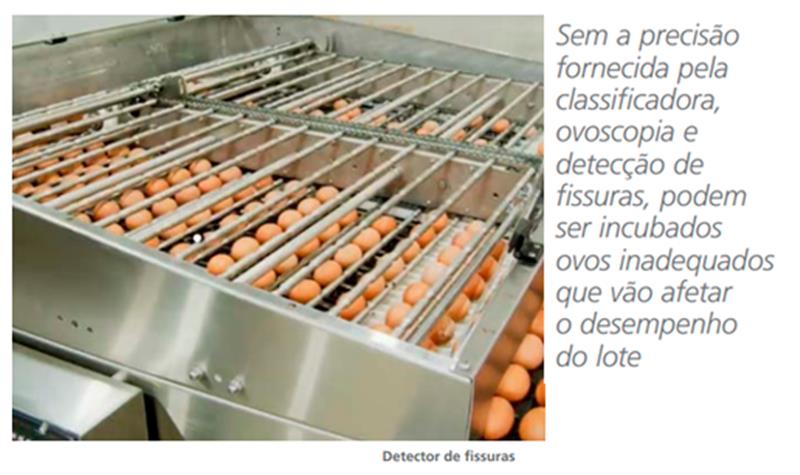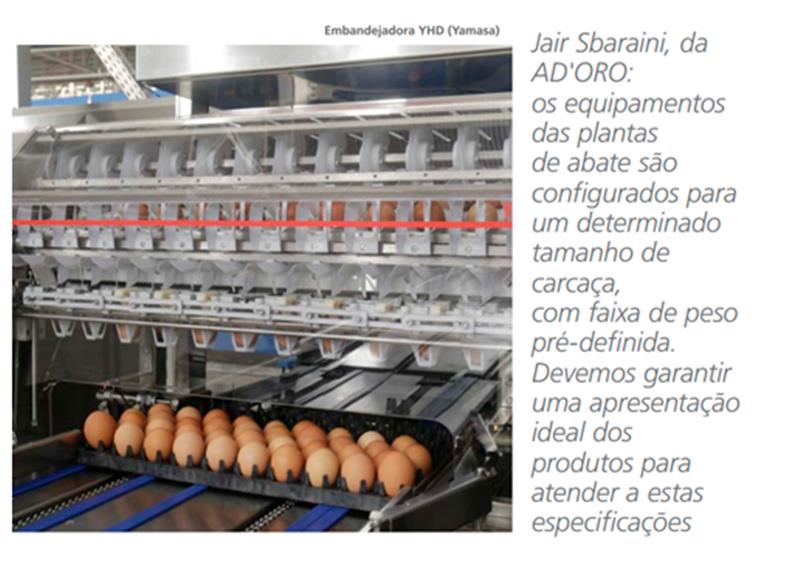INNOVATION IN POULTRY TECHNOLOGY AND AUTOMATION
News
Precision Poultry Farming: the fine tuning in the Hatchery
Quickly and accurately finding the ideal point of action saves time and money and makes companies quickly realize the positive return of defined strategies and corrective actions.
Author: Adriano Bailos, Industrial Incubation Consultant,


With an extremely demanding production chain in search of better results and the highest quality of products, the Brazilian poultry industry has increasingly demonstrated the need to work in the smallest details. Quickly and precisely finding the ideal point of action saves time and money and makes companies quickly perceive the positive return of the defined strategies or the corrective actions adopted.
Incubation: precision and detail aiming at results
A highly important step in this chain is industrial hatchery, with increasingly larger and more technological hatcheries where small failures become big problems, and the margin for error gets smaller and smaller.
When we talk about precision poultry in the area of industrial incubation, we are talking, for example, about knowing gram by gram the real weight of each of the eggs that we are incubating, selling or discarding, to be sure that the incubated eggs are in the correct position and/or even predict how evenly chicks will be housed, as we know a chick`s body weight is very high. directly linked to the weight of the egg that originated it.

Classifying 100% of the eggs by weight brings us a series of advantages and a good example of this is: the initial production phase of the matrices. When birds start to lay hatchable eggs at 25 or 26 weeks of age there are still very small eggs being produced and it`s important to remember. It is necessary to make the separation of what is What is really hatchable and what will it be? discarded. For this operation, an automatic weight classifier is required. Is it highly effective already? It is practically impossible to visually define whether an egg is 48, 49 or 50 grams, and it is completely impractical to manually weigh thousands of eggs. In this way, without the precision provided by the classifier, hatching eggs will be discarded and eggs smaller than the stipulated minimum weight will be incubated.
Speaking further on precision, a new strand that is very common in single-stage hatcheries is that of precision. incubation by thermal load, which consists of distributing the eggs inside the incubators taking into account their potential heat generation. In this case, knowing the actual weight of these eggs helps the incubator to define such positioning. that heat generation will basically depend on two parameters: average fertility and egg mass. Having these two pieces of information accurately is essential. It is possible to homogenize the generation of heat inside the incubator, reducing the hatching window and improving the quality of the birds. The fact that the classifier has the necessary technology to correctly position the eggs with the air chamber upwards, reducing late embryonic mortality and improving hatchability is also important. a big plus. In the management area, we still have the possibility of a great improvement in operating costs with the reduction of approximately 50 to 60% of the employees needed in the classification of eggs.
Egg uniformity at slaughter
 It is not. novelty that a lot of chickens with homogeneous weight starts with a batch of uniform chicks that in turn come from uniform eggs, that is, the fact of weighing the eggs individually through an automatic classification and splitting into categories before incubating is important. This is the beginning of a chain that will culminate in this series. This is the most cost-sensitive area of the company in terms of costs: the Slaughterhouse! According to the director of agricultural and industrial production at AD`ORO S.A., Jair Sbaraini, currently the high level of automation of existing equipment in the production process of slaughter plants is configured to meet a certain carcass size with a pre-defined weight range. In this way, we must guarantee an ideal presentation of the products to meet the strict specifications of these equipment.
It is not. novelty that a lot of chickens with homogeneous weight starts with a batch of uniform chicks that in turn come from uniform eggs, that is, the fact of weighing the eggs individually through an automatic classification and splitting into categories before incubating is important. This is the beginning of a chain that will culminate in this series. This is the most cost-sensitive area of the company in terms of costs: the Slaughterhouse! According to the director of agricultural and industrial production at AD`ORO S.A., Jair Sbaraini, currently the high level of automation of existing equipment in the production process of slaughter plants is configured to meet a certain carcass size with a pre-defined weight range. In this way, we must guarantee an ideal presentation of the products to meet the strict specifications of these equipment.
Thus, for a harmonic operation, a high level of uniformity of the raw material for slaughter is required, as it is already possible. that the incidence of batch unevenness impairs the processing performance, reducing the efficiency of the machines, and impacting on other factors such as the well-being of the birds (humane slaughter), the integrity of the products and compliance with consumer specifications.
When we do not reach the necessary uniformity, the problems start right away. in the hanger, they go through the stunning stage, then at a lower incidence, but still to be considered, in the bleeding line. They continue in the scalding and plucking stages and in the evisceration line, increasing the incidence of inappropriate cuts.
In short, the more uniform the flocks of birds are, the less will be the need for rework and the less condemnation or disqualification of products, optimizing the production process and the yield of the final products, resulting It has a significant impact on companies` efficiency and return on investment.